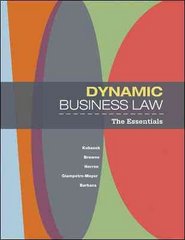Question
Consider two countries, Home and Foreign, which are closed to international trade. Home has LH=(20)(1,390) units of labor available, and Foreign has LF=1,390 units of
Consider two countries, Home and Foreign, which are closed to international trade. Home has LH=(20)(1,390) units of labor available, and Foreign has LF=1,390 units of labor. Both countries can produce two goods, trucks and oranges. Home's unit labor requirement in trucks production is 85, while in oranges production is 52. Foreign's unit labor requirement in trucks production is 34, while in oranges production it is 8.
Assume that consumers in both countries have the same preferences and their relative demand (RD) takes the following form: (Demand for trucks)/(Demand for oranges) =(8.6)/[(Price of trucks)/(Price of oranges)].
[NOTE: In all your graphs, please, plot the curves given in the problem and NOT generic curves.]
- Assume first that the countries cannot trade. Compute the equilibrium price of trucks relative to oranges in each country. Explain.
- Definecomparative advantage. Which country has comparative advantage in producing trucks? And in producing oranges? Explain.
- Construct the RS and RD curves and use them to compute algebraically the value of the world's relative price of trucks. Show it in a graph. Explain how you construct the curves. [HINT: put (price of trucks)/(price of oranges) in the y-axis.]
- Compute algebraically the quantity of trucks and oranges produced in each country. What is the pattern of trade? Explain.
Step by Step Solution
There are 3 Steps involved in it
Step: 1

Get Instant Access to Expert-Tailored Solutions
See step-by-step solutions with expert insights and AI powered tools for academic success
Step: 2

Step: 3

Ace Your Homework with AI
Get the answers you need in no time with our AI-driven, step-by-step assistance
Get Started


